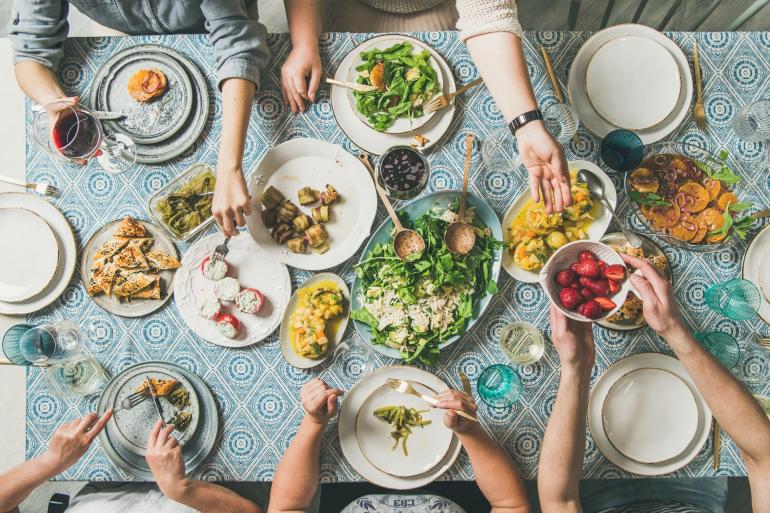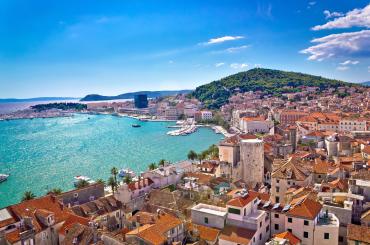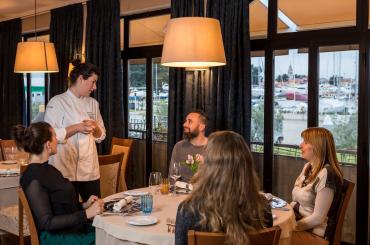Croatia is a central European and Mediterranean county, and it shows in its diverse cuisine, the Mediterranean diet being more prominent than the continental cousine. The term was coined nearly 50 years ago by American physiologist Ancel Keys, who studied the influence of diet on health. He considered the Mediterranean diet not just as food but as a way of living and eating traditional meals in the countries around the Mediterranean Basin, such as Greece, Croatia and Italy.
Cutting down on processed foods
A diet is primarily plant-based, with fish and seafood preferred as animal protein sources. The Mediterranean diet contains whole grains, olive oil, fruits, vegetables, beans and other legumes, nuts, herbs, and spices. It also encourages moderate red wine consumption and cutting down on processed foods.
 Photo: Foxys Forest Manufacture
Photo: Foxys Forest ManufactureEating together is the foundation of the cultural identity and continuity of communities throughout the Mediterranean basin
In every corner of Croatia, you can find people who have dedicated their careers to preserving the traditional heritage and maintaining social connections through sharing a meal – even with a perfect stranger. Back in 2013, the cuisines of Hvar and Brač islands were recognized as part of UNESCO's intangible heritage Mediterranean diet, along with six other countries, placing Croatia high on the list of significant and healthy gastronomic destinations.
Great locally produced Mediterranean meals are available in restaurants, but also at numerous family owned farms
As per the UNESCO report, eating together is the foundation of the cultural identity and continuity of communities throughout the Mediterranean basin. It is a moment of social exchange and communication, an affirmation and renewal of family, group or community identity. The Mediterranean diet emphasizes values of hospitality, neighbourliness, intercultural dialogue and creativity, and a way of life guided by respect for diversity. It plays a vital role in cultural spaces, festivals and celebrations, bringing together people of all ages, conditions and social classes.
 Photo: Brch
Photo: BrchThe great thing about peka is that it's great for preparing any kind of meat, but the most popular are certainly octopus peka, lamb or veal
Wherever you go in the regions of Istria and Dalmatia, you will discover fine restaurants that consistently offer many fish specialities, ham or cheese. But great locally produced Mediterranean meals are also available at numerous family farms. You would not believe the magic some cooks can produce with some olive oil, garlic, pepper and salt.
It is usual to indulge in some famous Dalmatian brandy as an appetizer, opening your appetite and preparing you for the delicacies to follow. The traditional way of hosting guests in Dalmatia begins with one such pleasing appetizer, followed by prosciutto ("Pršut"), fine cheese, often oiled and eaten with olives, black or green, as you prefer.
Fish swims three times in Dalmatia...
Other tasty dishes are fish soups with polenta ("Pura"), grilled fish or octopus under the lid ("Ispod peke"). After a good meal, you must taste sweet, crispy "Dalmatian kroštule", a typical local sweet in Dalmatia. What to drink with all these delicacies? It is said that a fish swims three times in Dalmatia. Once in the sea, then in local olive oil during preparation, and finally in white wine as it is consumed during the meal. So, wine is a must. People like to drink Prošek, local sweet dessert wine, when preparing a fish meal. Don't forget the "Soparnik"- a local specialty from the Omiš hinterland, made of dough, spinach and garlic.
If you want some more simple tastes, there are fragrant "Viška", "Forska" and "Komiška" pie that go perfectly with a glass of wine Vugava and Plančić from the island Hvar. If you need extra invigoration then we recommend you to drink a glass of Smutnica - red wine mixed with sheep or goat milk, from the islands Brač and Hvar.
If you'd like to know what's it like to be a part of that culture and enjoy spectacular and healthy food, give a call to RealCroatia's trip designers.
In the area of Cetina and Sinj, except "buzaras" of river crabs, there are the famous sausages "luganige" and tasty small stuffed cabbage rolls with beef.Some key ingredients to quality Dalmatian cuisine are the simplicity of the dishes, fresh and seasonal products, and traditions and recipes handed down through family generations by grandmothers who devoted their lives to feeding the family.
 Photo: Brch
Photo: BrchThe Mediterranean diet is localy sourced, primarily plant-based, with fish and seafood preferred as animal protein sources
Remember, for people in Croatia, eating a meal is not just about the food, it is also a social happening, and the family is often joined by friends and neighbours. Gathering around the table for a communal meal is an everyday occurrence as well as marking feast days and family celebrations. If you'd like to know what's it like to be a part of that culture and enjoy spectacular and healthy food, give a call to RealCroatia's trip designers.





